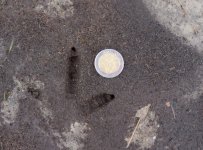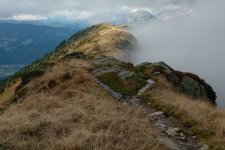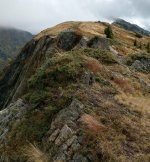mTown
Well-known member
Dear Forum Members,
after several months I have an ID request again. While hiking in the Austrian Alps I came across a footprint of which I would like to hear your opinion. I have a suspicion, but do not say this yet. The 2-euro coin has a diameter of 2.5 centimeters. So the pugmark is slightly larger than 5 centimeters/0.98 inches (probably about 5.5 - 6.5 centimeters/2.16 - 2.55 inches).
Here the data to the photo:
Thank you in andvance!
after several months I have an ID request again. While hiking in the Austrian Alps I came across a footprint of which I would like to hear your opinion. I have a suspicion, but do not say this yet. The 2-euro coin has a diameter of 2.5 centimeters. So the pugmark is slightly larger than 5 centimeters/0.98 inches (probably about 5.5 - 6.5 centimeters/2.16 - 2.55 inches).
Here the data to the photo:
- Location: Austrian Alps (Styria/Salzburg).
- Recording time: Beginning of October 2022
- Altitude: about 2,000 meters
- Landscape: Open landscape with rocks, grasses and a few bushes (see the two pictures in the attachment).
Thank you in andvance!






